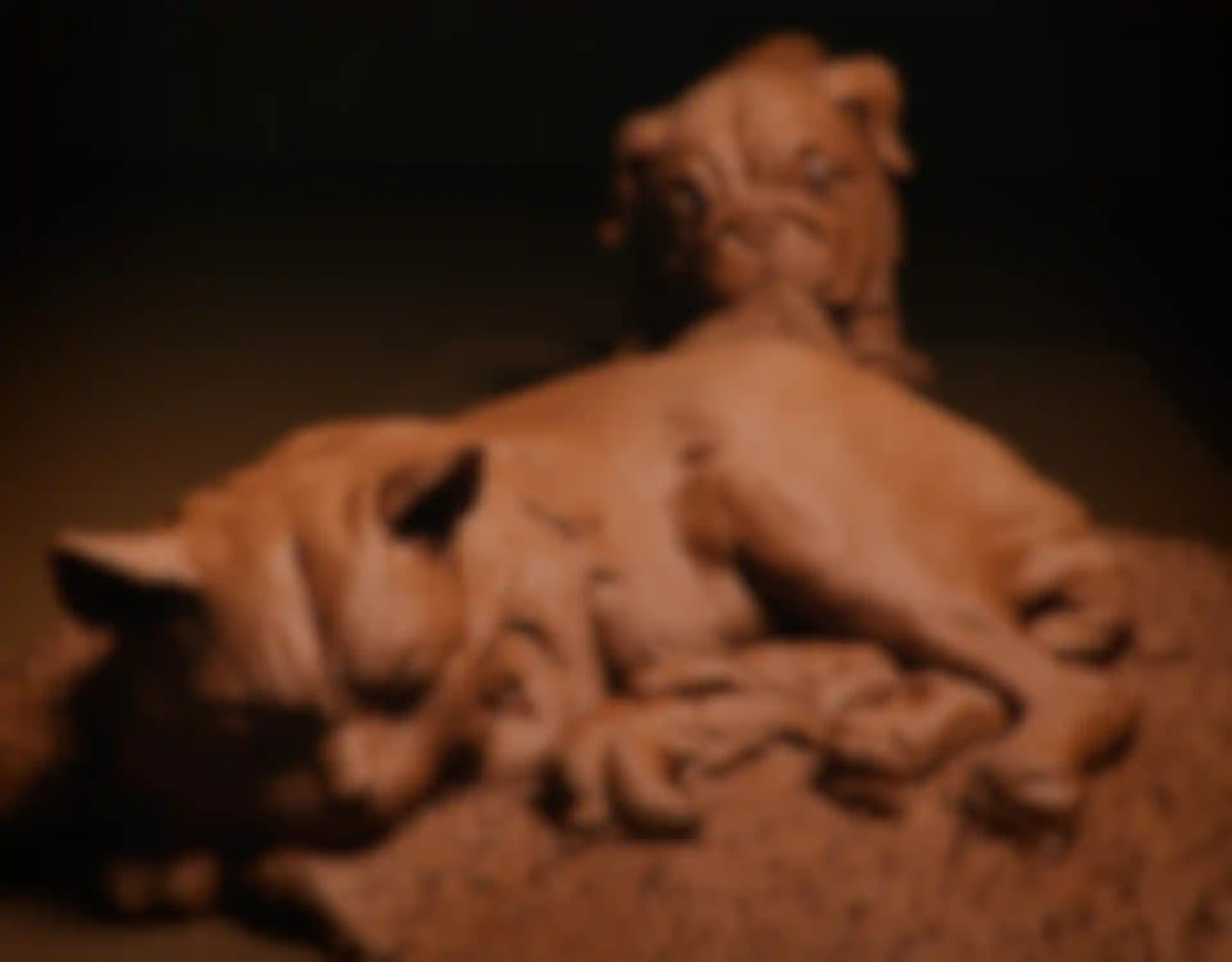
Testing the Power of ZBrush for iPad Character artist Magdalena Dadela on how easy it is to transfer her desktop workflow to iPad.
Magdalena Dadela (aka Intervain) is known for creating human and animal characters for a wide array of films and games. A prolific ZBrush artist who specializes in visual development, character modeling, and texturing, her work can be seen in season 3 of “Love, Death & Robots,“ "Rebel Moon Part One: Child of Fire,” “Army of the Dead,” “Fantastic Beasts: The Crimes of Grindelwald,” the “Assassins Creed” franchise and more.
Maxon asked Dadela, who is based in Canada and already a veteran ZBrush beta tester, to try out ZBrush for iPad ahead of the release. Here is what she had to say about that experience so far, and we also asked her to tell us about herself, her work, and her path to character creation.
Tell us about yourself and what you enjoy about 3D character work.

Dadela: My journey to 3D sculpting began when I first saw “Finding Nemo,” which triggered a sudden, overwhelming need to learn 3D. I left academia in Poland and headed to Vancouver Film School in Canada to study 3D animation and visual effects. That was almost 20 years ago, and I’ve been in the film and games industries ever since.
ZBrush has been a big part of my journey from the very beginning. I like expressive characters in storytelling and facial expressions are my passion. I enjoy creating both human and animal characters that are a little bit fantastical but still skew toward realism.
Magdalena Dadela is a character artist in Montreal, Canada. See more of her personal work on ArtStation.
Where do you find inspiration for your professional and personal projects?
Dadela: I’m inspired by ceramic art, glass, textiles, gemstones, and natural materials. I gravitate to things that are textured, like natural surfaces and I’m one of those people who sometimes just stare at stains on a concrete wall, analyzing why they look the way they do. In my personal work, I’m fascinated with form and big shapes, have a bit of an obsession with textures and enjoy color explorations.

Describe your usual creative process.
Dadela: ZBrush has been my go-to app for every project since learning it at VFS. It’s the best digital sculpting tool because it’s intuitive and allows for easy changes, many iterations, and fast reworking of failed ideas. I like working with the default settings and not get too addicted to custom setups or brushes, though I do have a few favorite brushes I have modified a little bit, including ClayTubes, Move Topological, Sharp, and Standard.
I start with basic shapes using Sculptris Pro, my favorite tool, which is also great on the iPad version. It eliminates the need for high subdivisions, making the workflow fast and light. Once I’m happy with the overall forms, I go into Dynamesh and subdivisions. I also use split tools in my personal and professional workflow. I tend to use polygroup selections and split unmasked points all the time. Dynamic Subdivisions is one of my favorite tools, which makes it very simple to add thickness.

Tell us about your experience so far with ZBrush for iPad.
Dadela: I have always hoped there would be an iPad version of ZBrush so I could get some ideas down quickly when I am away from my desk. I’ve tried other iPad apps, but none has blown my socks off, so the opportunity to test ZBrush for iPad felt like a natural step.
What has impressed me most is how stable the app is despite being on this small device. And since I’m already in tune with ZBrush for desktop, the iPad version was easy to pick up without constantly wondering which button to press.

I wanted to test it on a variety of little projects, so I began with animals and later added flowers and a few human faces to the mix. The little bird and piglet were a quick way to transfer my desktop workflow to the iPad version, and starting with several subtools forced me to use my usual workflow out of the box and plow through every stage. I did a lot of merging, splitting unmasked points, and appending and duplicating of subtools.
For the flowers project, I also wanted to try PolyPainting and ZSpheres, which are often part of my desktop workflow. The young girl sculpt was more of a free-spirited project. I started with the cartoon head [Demo Anime Head], one of my default ZBrush tools, and just pushed and pulled madly without thinking too much.
Now that you’ve tried it, how will ZBrush for iPad be useful to you?
Dadela: I think it will be great for iterating and visualizing ideas quickly in 3D and as I’ve said, it’s quite intuitive, especially if you already know the desktop version. It is the perfect tool for concept sculpting and ideation, and I will probably use it mostly when traveling.
I want to thank Maxon for letting me try this tool, and I’ve really enjoyed seeing how quickly other artists on the beta team took to the iPad version and created a wide variety of work. It’ll be exciting to see the many ways artists use this new app!
Helena Swahn is a writer based in London, UK.



